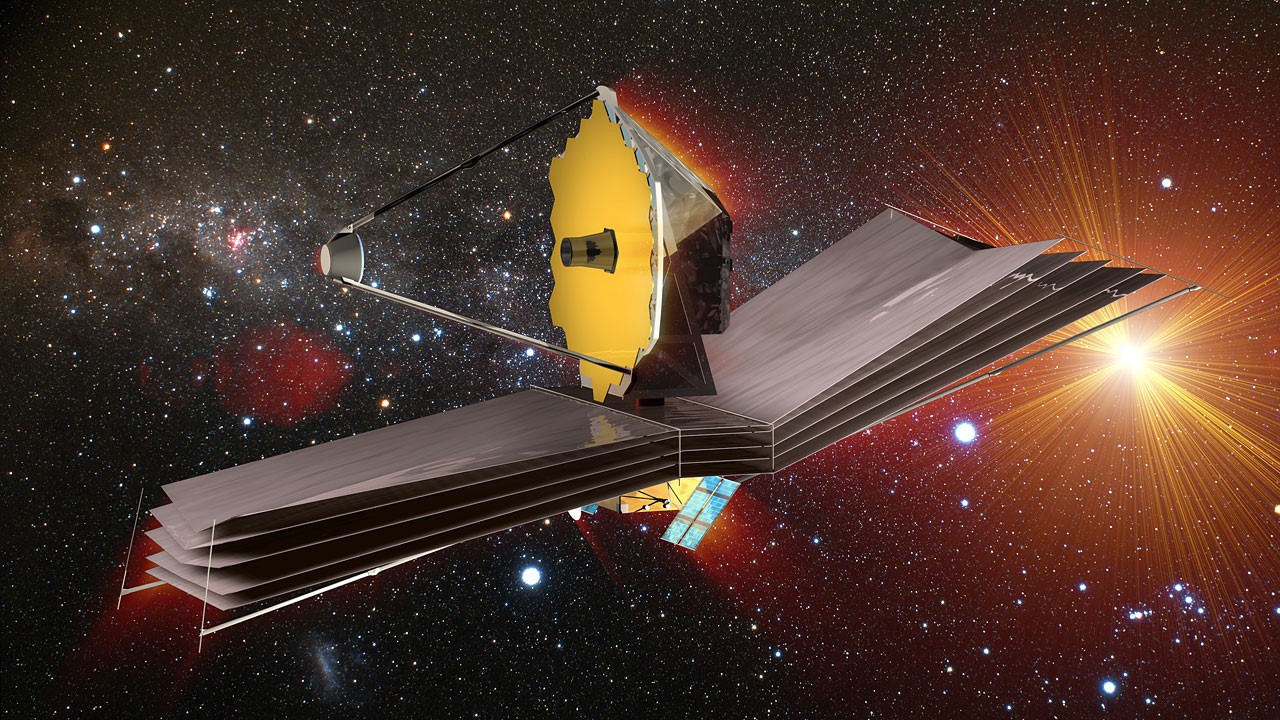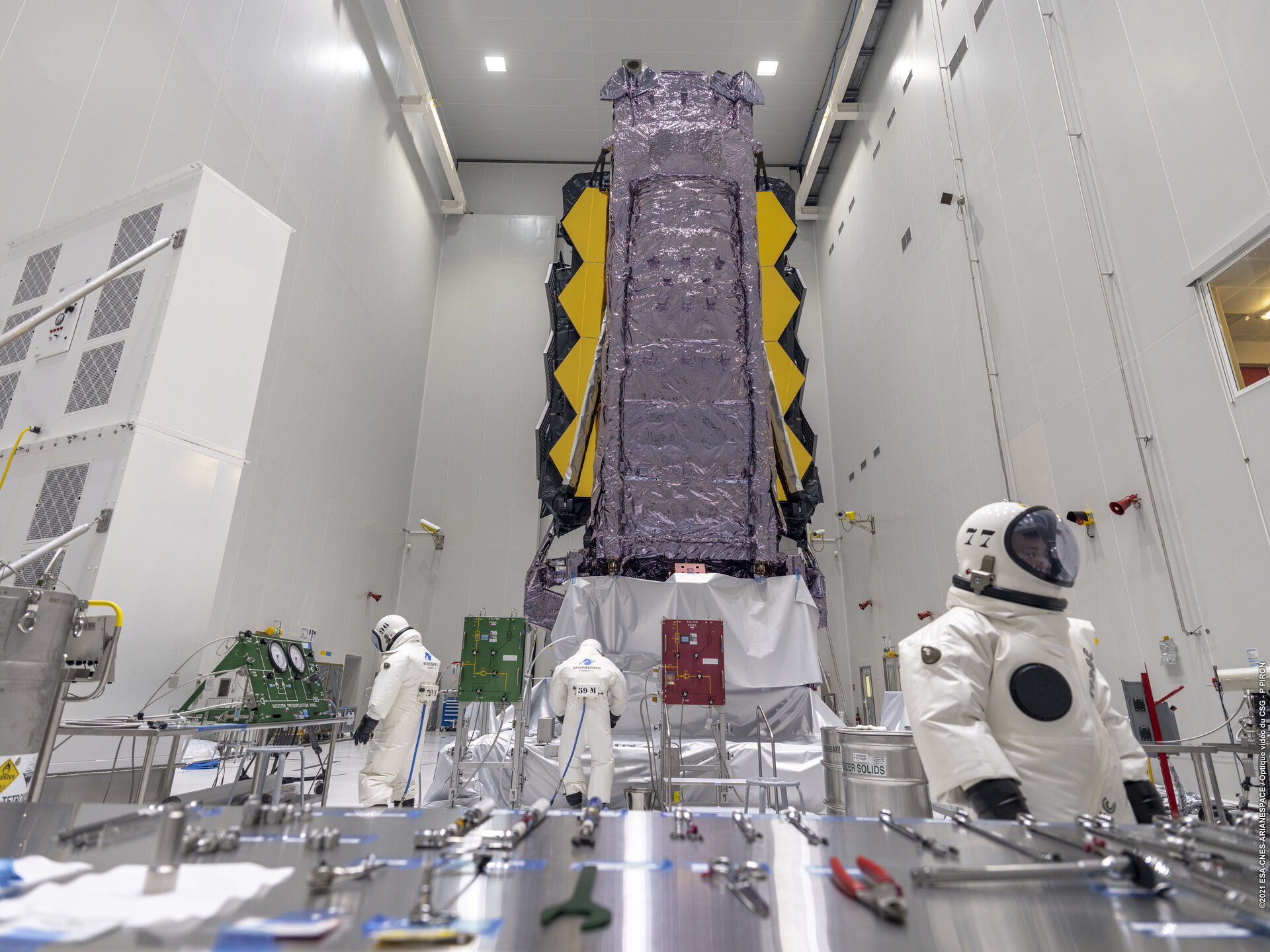NASA's James Webb Space Telescope officially set to launch Dec. 24

NASA's newest flagship observatory is about to begin an incredible journey and now has an official launch date.
The James Webb Space Telescope is expected to launch in a week, on Dec. 24 at 7:20 a.m. EST (1220 GMT or 9:20 a.m. local time in French Guiana), and has been packed up inside the nose cone of its Ariane 5 rocket for the trip.
"Late yesterday, teams at the launch site successfully completed encapsulation of the observatory inside the Ariane 5 rocket that will launch it to space," NASA officials wrote in an update today (Dec. 18). The news comes as NASA and Arianespace, builder of the Ariane 5, worked to fix a data cable issue that delayed the mission from a Dec. 22 launch target.
A final launch readiness review will be held Tuesday (Dec. 21) to make sure the Webb space telescope is ready for launch. If so, its Ariane 5 rocket will roll out to the launch pad at the Guiana Space Center in Kourou, French Guiana on Wednesday.
Live Updates: NASA's James Webb Space Telescope launch
Agency officials are framing Webb as a successor to the venerable Hubble Space Telescope, which means Webb has a big mandate to fill. Hubble's topline science includes showing the universe is accelerating in its expansion, finding new moons around Pluto, and helping to construct 3-D maps of dark matter.
With the $9.8 billion Webb ready to pick up the baton after years of developmental delays, scientists expect the telescope will push even further back in time. The telescope will journey to an isolated spot about 1 million miles (1.6 million kilometers) from Earth known as a Lagrange point, a gravitationally stable spot between two celestial bodies.
Breaking space news, the latest updates on rocket launches, skywatching events and more!
There, far from light interference from Earth, Webb will turn its attention to the early universe, to exoplanet atmospheres and other science using a fold-out telescope almost 22 feet (21.6 meters) across, roughly three times the aperture of the 1990s-era Hubble (8 feet or 2.4 meters). With more aperture available, Webb will gather more light and more detail on celestial destinations.
Webb has overcome numerous technical challenges, budgetary inflations and threats of cancellation over its complex development — including a last-minute unexpected release of a clamp band that pushed the launch by a few more days.
The Atlantic notes the original project scope called for Webb to fly in 2007 with a budget of $500 million (roughly $667 million in 2021 dollars), but technology advances and unforeseen difficulties contributed to delays. (The pandemic also hurt the schedule in 2020.)
This means Webb's budgetary trajectory also followed in the footsteps of Hubble, which launched over-budget and later than expected. Hubble is also famous for accidentally going to space with a flawed mirror, which required a crew of astronauts to repair. Webb will be too far for such help, but NASA has said prime contractor Northrop Grumman tested all systems thoroughly ahead of launch.
The naming of the Webb telescope has also been criticized, reports indicate. The moniker is meant to honor James Webb, NASA's second-ever administrator who led the agency from 1961 to 1968 while it was preparing for human landing missions. Critics of the administrator claim that he was complicit in discrimination against gay and lesbian NASA employees during his tenure, including incidents such as the 1963 "immoral conduct" firing of Clifford Norton.
But with the generational observatory finally on the eve of launch, NASA is hoping all the effort will be worth it. "It will explore every phase of cosmic history – from within our solar system to the most distant observable galaxies in the early universe, and everything in between," the agency said in a November blog post about the mission. "Webb will reveal new and unexpected discoveries, and help humanity understand the origins of the universe and our place in it."
Follow Elizabeth Howell on Twitter @howellspace. Follow us on Twitter @Spacedotcom and on Facebook.

Elizabeth Howell (she/her), Ph.D., was a staff writer in the spaceflight channel between 2022 and 2024 specializing in Canadian space news. She was contributing writer for Space.com for 10 years from 2012 to 2024. Elizabeth's reporting includes multiple exclusives with the White House, leading world coverage about a lost-and-found space tomato on the International Space Station, witnessing five human spaceflight launches on two continents, flying parabolic, working inside a spacesuit, and participating in a simulated Mars mission. Her latest book, "Why Am I Taller?" (ECW Press, 2022) is co-written with astronaut Dave Williams.


